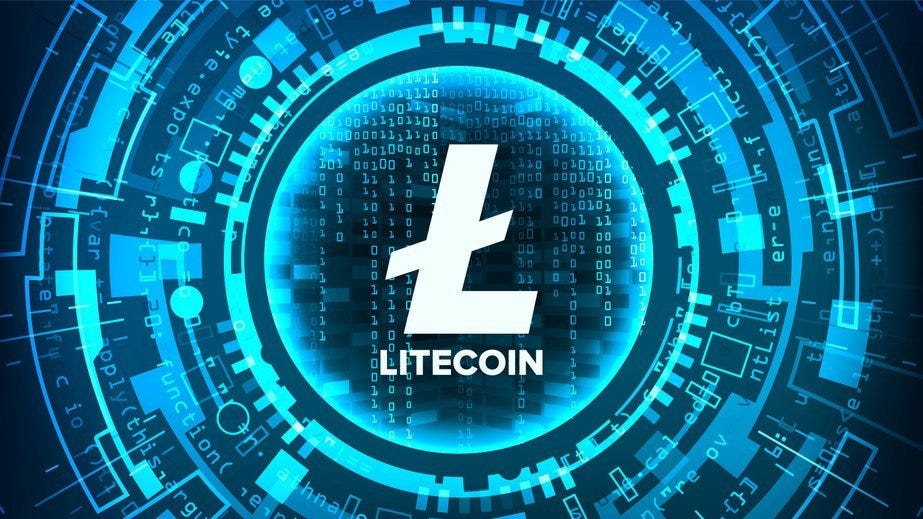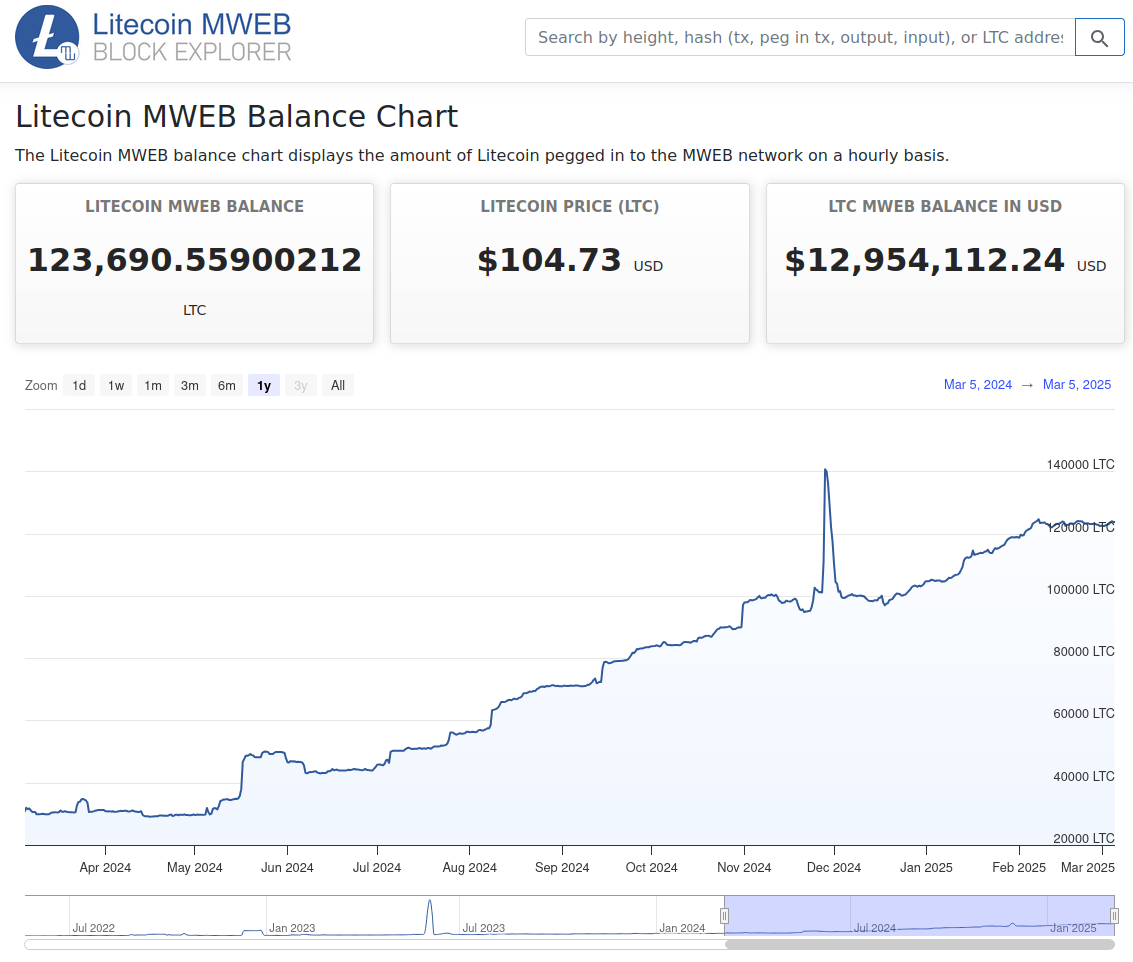Unlocking Privacy with Litecoin's MWEB
As you may have already read in my recent X post, I am now a contributor to the Litecoin Foundation and I’m thrilled to share my passion for privacy-focused cryptocurrencies, such as LTC’s MimbleWimble Extension Blocks (MWEB).
While many people nowadays have completely forgotten about Litecoin, some even call it a ‘ghostchain’, which is not just a misconception, but simply wrong. I see Litecoin, paired with its optional privacy capabilities through MWEB, as a digital currency that is here to stay. I have used it many times over the years to conduct transactions myself – and will continue to do so.
My role involves supporting the community and spreading awareness about Litecoin’s unique features, especially MWEB. Privacy isn’t just a buzzword; it’s a fundamental pillar of personal freedom; it protects us from surveillance and preserves our autonomy and ensures that our financial choices are not revealed to the whole world, a problem that all pseudonymous blockchains such as Bitcoin and Ethereum share.
Litecoin managed to bring this vision to life, blending privacy with practicality. I will start with telling you about some basics regarding Litecoin, as well as explaining MWEB to you. Time to dig in!
What is Litecoin?
Litecoin was launched in 2011 by Charlie Lee and is a P2P cryptocurrency that is often seen as ‘digital silver’, as Bitcoin is seen as ‘digital gold’ by many people in our industry. It is a lighter, faster version of Bitcoin, due to its 2.5-minute block times (while Bitcoin block times are 10 minutes) and a 84 million max supply (21 million for Bitcoin). They have been pioneering features like SegWit and never stopped innovating, e.g. MWEB to mention a major milestone, earning their place at the table of most trusted cryptocurrencies, ever.
What is MWEB?
MWEB, short for MimbleWimble Extension Blocks, is Litecoin’s upgrade that aims to enhance privacy and scalability. MimbleWimble itself was not invented by Harry Potter, but the developer Tom Elvis Jedusor, back in 2016. The integration into Litecoin began in 2019 on initiative of Litecoin lead developer David Burkett, who was supported by donations from the community, as well as by Charlie Lee himself and launched in May 2022.
When it comes to the technology, MWEB operates as an optional parallel layer to Litecoin’s main blockchain. Facilitating stealth addresses (single-use addresses that hide the recipient’s identity) and confidential transactions, which conceal transaction amounts using cryptographic proofs. This way, all addresses and amounts are only visible to sender and receiver, no one else, contrary to the Bitcoin blockchain. Through pruning old transaction data it also enhances scalability, via MWEB there can be 10x more transactions per second than on the Litecoin main chain.
How to Use MWEB
The process of using LTC MWEB is pretty straightforward, there are just some basics that you need to know about first. In the beginning you have to ‘peg in’ your legacy Litecoin from the main chain to the MWEB layer, to receive LTC MWEB on an MWEB address starting with ‘ltcmweb1’. Miners then process this through a ‘HogEx’ transaction in order to enable private use. On the other hand, to exit MWEB, you have to ‘peg out’ to a legacy LTC address – funds will be available after six block confirmations.
Personally I started using MWEB via CakeWallet, a privacy-focused mobile wallet, which added MWEB support a short while ago:
1. Download CakeWallet
2. Set up a Litecoin wallet
3. Select ‘Generate MWEB address’
4. Copy the stealth address & share with sender
5. Sent LTC is automatically pegged into MWEB
6. To send privately get the MWEB address of the recipient
Simple as!
Challenges and Criticisms
While the strength of MWEB is obvious, it also faces hurdles, same as any other privacy-focused technology. So far, many wallets and centralized exchanges are not supporting it, often citing ‘complexity’ or ‘security concerns’. On the user side, many have problems grasping the ‘peg in’/’peg out’ process when doing a transaction the very first time.
“MWEB’s optional nature means it’s not a regulatory red flag – it’s a tool for users, not a mandate.” - David Burkett
Personally, I believe education can demystify pegging, as it is really not that hard to do, and as more wallets like CakeWallet adopt MWEB, others might too, usability will improve. Charlie Lee once said, “Privacy is a human right; Litecoin’s job is to make it accessible, not force it.”
I am confident that the chapter ‘Litecoin MWEB’ is just starting!
The Future of Financial Privacy & MWEB
Over the last years I have been very vocal when it comes to privacy-enhancing solutions in the blockchain industry, as I see the need for it, different from the majority of other people. However, the privacy space is recently expanding, as more and more people grasp the fundamental need of having control over their financial data. As long as Litecoin MWEB can be integrated in more wallets and exchanges, it should grow together with the privacy space in crypto in general.
Privacy in cryptocurrencies isn’t a luxury, it’s a necessity for freedom. Litecoin MWEB delivers exactly this, ‘sound money’ for the digital age. If you see it the same way, you should check out further Litecoin MWEB resources and follow their socials, you will find all of it in the link list below.
Link List
Litecoin Website:
Litecoin X: https://www.x.com/litecoin
LTC Foundation:
LTC Foundation X: https://www.x.com/ltcfoundation
MWEB Resource: https://litecoin.com/learning-center/litecoin-and-mweb-what-it-is-and-how-to-use-it
MWEB Explorer:






